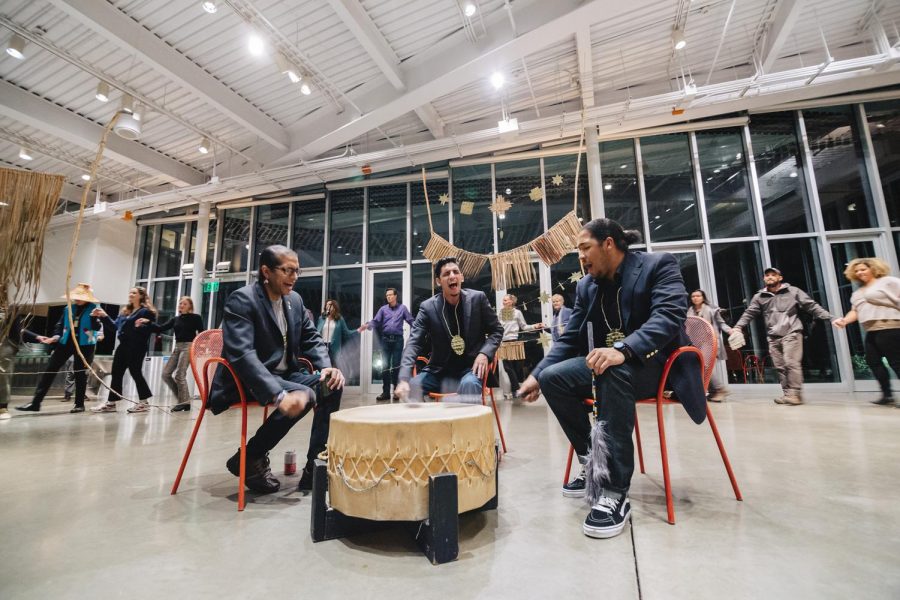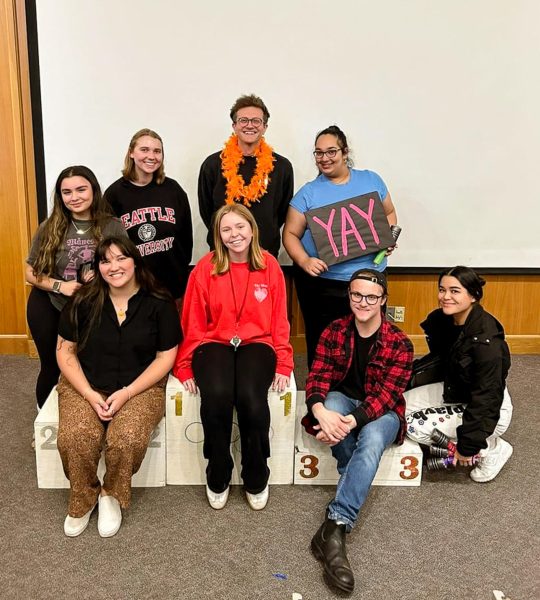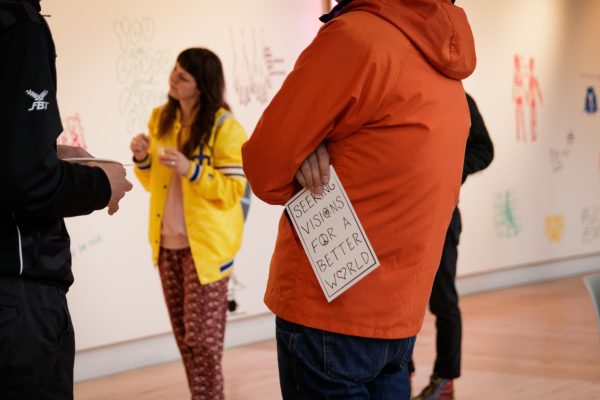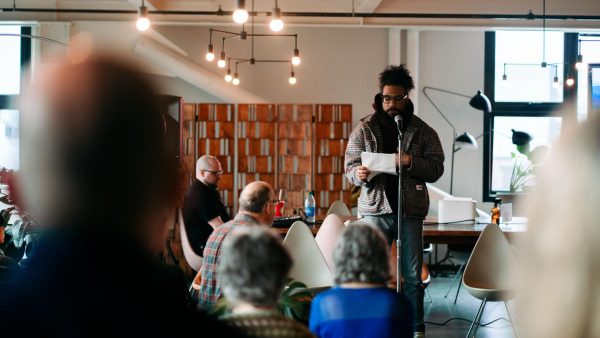Kimberly Deriana Builds Community Through Woven Art Practice
The Seattle Art Museum (SAM) offers a residency program for artists in the Seattle community to use the SAM’s space and resources and make installations within museum space. Architect and artist Kimberly Deriana was chosen for the winter residence at the Olympic Sculpture Park for the first two months of 2020.
Deriana is a third-generation Urban Native, meaning she does not live on her tribal land and is originally from Bozeman, Montana. Focusing on sustainability, culture and community, Deriana’s project is based on bringing together the Indigenous community in the greater Seattle area.
In June 2019, Deriana installed a sculpture at the King Street Station Plaza with similar intentions as her current project. Using lodgepole to create a sundial, Deriana wanted to honor the land, the Coast Salish and other Indigenous people coming together. Sustainability, cultural acknowledgment and relationality were all themes explored in her sundial piece—and these themes show up in her residency project at the SAM.
Deriana put the money she received from her stipend with the residency program back into her project to hire master weavers to help create her four structures that are currently in the Olympic Sculpture Park’s Paccar Pavilion on the weekends.
To start the project, Deriana reached out to master weavers in the community to start learning how the craft, as Deriana is not a master weaver herself. She then had to gather and collect cattail to create her structures. Cattail is a marsh plant that is commonly used for weaving when dried and can be used for summer shelters, plates and mats.
“I thought this was a good community project because traditionally, these long eight feet by five feet-long mats were woven by women and children,” Deriana said. “So I wanted to pay homage to the Coast Salish but also I first learned about cattails through the Flathead Nation.”
Culture is an important aspect to her project and Deriana wanted to prioritize working with and learning from the Coast Salish people since it is their land the SAM—and her residency—are occupying.
Deriana and the weavers created four cattail pieces that are hanging in the Pavilion at the Olympic Sculpture Park on the weekends. The four pieces face each direction and have different patterns to indicate natural events, such as the setting and rising sun. Deriana expressed she did not gather a large amount of cattails to create more than four large pieces but she hopes to use the leftover scraps to experiment with paper making and dying.
During the event, the native drumming group, the Dearborn Singers, performed a welcome song, following a blessing and land acknowledgement of the Coast Salish land the event resided on. The singing group performed another song and event attendees were invited to dance along to the singing and drumming. Deriana also shared the meaning behind her project and important personal aspects.
Sustainability was one part of the project that meant a lot to Deriana and her art-making in general. Gathering and using cattails was a way for the community and her to recognize the beauty and resilience that resides in nature and to honor her ancestral background.
In regards to her experience with the residency program, Deriana expressed her positive experience and what she is learning.
“It is a really amazing opportunity to be able to install and fabricate a piece of work at any scale I wanted, in this very well-recognized facility which is an honor to be chosen… it has just been a learning opportunity,” Deriana said. “The SAM team has been so generous and open about letting me execute the vision the way I think it should happen.”
Since her pieces are only open to the public on the weekends, Deriana must continuously pack up her art, which is one of the biggest hurdles in her work with SAM.
Deriana has another month left in her residency and is looking forward to continuing her learning experience in regards to Indigenous knowledge. Deriana has spent the last month acquiring information as she goes and is excited to keep discovering and growing during her last month in the program.
“I want to continue to learn Indigenous ways of doing things and being sustainable and figuring out how to do things sustainably and having the lightest footprint on Earth,” Deriana said. “I have learned so much about my own tribes and the Coast Salish tribe, and I want to keep that knowledge going.”
Deriana wanted the artist-in- residency program to highlight the importance of the arts in the community and choose a project that could involve the Indigenous community and finding that opportunity through SAM and her art.
“I feel like there is so much my fellow Urban Natives and indigenous folks want to learn but we don’t always have the opportunity,” Deriana said. “So sharing that is super important and I am so thankful to have the opportunity to display my work.”
The next artist-in-residency event will happen with Deriana later this month on Feb. 27. This will be her final event during her residency and she will share her last month of learning, discovery and indigenous knowledge in a free event welcome to all members of the community.
The editor may be reached at [email protected]






![Civil War is A24’s Political Blockbuster Exceeds Expectations [REVIEW]](https://seattlespectator.com/wp-content/uploads/2024/04/CivilWarReviewWeb-1-600x396.jpg)


